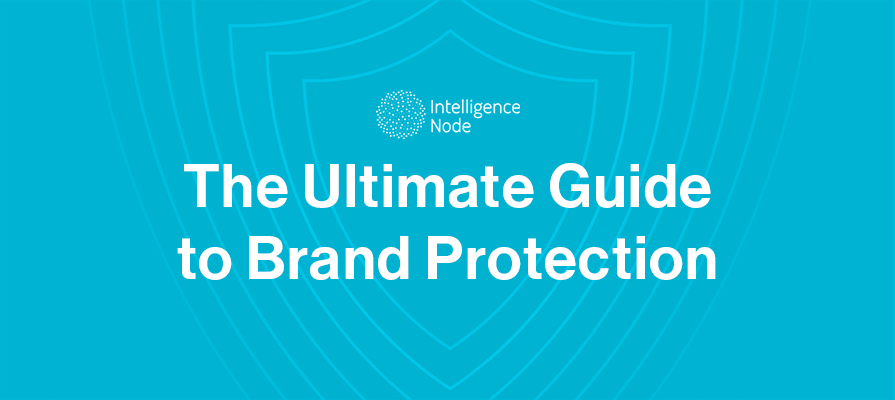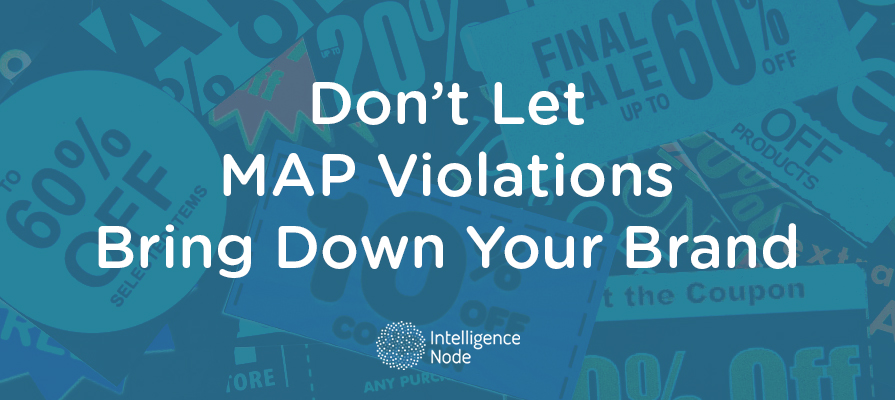Threats, Challenges, and Best Practices for Combating Counterfeit Products
This blog post was first published on Forbes in April 2021 in the form of two different articles – Part I & II and is authored by Intelligence Node CEO Sanjeev Sularia in his capacity as a member of the Forbes Tech Council.
2021 is finally behind us, but the disruptions it saw owing to the pandemic resurfacing will not be forgotten anytime soon. While retail was still recovering from the initial hit resulting in mandatory store closures enforced across the globe for months in 2020, it was not all bad. It accelerated the era of digital retail by years, and many retailers and brands that pivoted quickly held their ground even during these tough times. Though eCommerce was flourishing even before the pandemic, COVID-19 made it a necessity in the face of social distancing and curfews. It birthed many first-time online shoppers, making them comfortable with this mode of shopping and changing the face of retail permanently.
While retailers and brands were busy pivoting to omnichannel and eCommerce approaches, an old threat was getting more formidable in the background. Gray-market activities and counterfeits gained momentum as eCommerce accelerated and more brands took to third-party marketplaces to cater to the new, evolved shopper.
Though a recurring problem in the last few years, gray-market distribution has been long ignored by many brands and has hence been growing unchecked. The sooner brands realize the great threats this unauthorized sales channel can cause, the faster they can join hands to fight this alarmingly accelerating problem.
Challenges Posed By The Growing Third-Party Marketplaces
Third-party marketplaces like Amazon, Alibaba and eBay have seen unprecedented growth in the last decade. In fact, a Forrester survey (paywall) states that in 2019, online marketplaces in the U.S. accounted for 46% of online sales and 61% of global eCommerce sales—and that was before the pandemic. Thousands of brands sell their products on these sites through retailers and resellers to reach a larger audience.
However, many of these marketplaces do not have stringent procedures to authenticate their sellers and can often allow unauthorized sellers and counterfeiters to sell on their platforms. Some of them can also engage in an unsavory practice where they mix authentic products with counterfeit or imitation products in their fulfillment centers. This has given rise to gray-market goods and counterfeits entering the market and eating into sales, margins and integrity of brands and authorized sellers.
Let’s look at the top 4 challenges that have emerged with the growth in third-party marketplaces:
1. Rise in Counterfeiters and Rogue Sellers
Gray-market or unauthorized sellers have been around for quite some time. However, this problem has increased in the last few years. COVID-19 further accelerated the problem, as more shoppers started relying on online channels and the demand rose.
According to a recent Intelligence Node survey, 26% of shoppers encountered a rise in counterfeits during the pandemic. The CBP noted that in 2020, it seized “26,503 shipments containing goods that violated intellectual property rights. The total estimated value of the seized goods, had they been genuine, was nearly $1.3 billion.” Counterfeit products found their way into essential items as well, with 38% of shoppers we surveyed coming across counterfeit essential items online during the pandemic.

2. Growing Customer Concern and Distrust
Our survey found that many customers have started to lose trust in third-party sites, with eBay (80%) and Amazon (53%) getting the most votes for selling counterfeits online. This damaged reputation is not just hurting brands but these third-party sites as well; one out of four shoppers said they have stopped purchasing from eBay. Additionally, many brands have also raised concerns about getting bad reviews for their products on third-party sites due to customers receiving fakes instead of originals, further adding to consumer distrust.
3. Erosion of Brand Identity and Integrity
The rise in counterfeit products has been a massive blow to many large fashion and luxury brands. Counterfeits can be very close in appearance to the originals and can mislead consumers into believing they are purchasing original products for lower prices. In the process, both the brand and the consumer are duped, and consumer perception of the brand is affected. We found that Louis Vuitton (56%) and Gucci (52%) were the leading luxury brands that had been counterfeited.

This statistic is a testament to the gravity of the problem surrounding counterfeits and the resultant erosion of brand identity and value. When consumers spend on luxury brands and get a fake or a substandard product, they are going to lose trust in that brand and refrain from buying online or move to another brand altogether.
4. Loss of Sales and Margins
An adverse outcome of gray-market goods and counterfeits is the lost income for brands, manufacturers and authorized retailers. These unauthorized sellers eat into the margins and sales of brands by engaging in price gouging and heavy discounting, disrupting the market balance and resulting in frustrated retail partners and confused consumers. As it is an innate consumer nature to look for competitive prices for products, they are often deceived into buying a near-identical fake product in place of a legitimate one for a much lower price. Along with consumer dissatisfaction, these unauthorized channels and sellers can affect sales and margins—as well as sever relationships with partner retailers.
However, there are seven best practices that can be implemented in order to tackle unauthorized sales channels and protect brands and margins. From improving your e-governance and tightening your supply chain to investing in a DTC sales model, I will discuss in detail how these can be accomplished below:
7 best practices to fight counterfeit products online
1. Improve your e-Governance
Brands can no longer partner with just any distributor owing to the fact that many marketplaces do have gray-market sellers that sell products including stolen goods, parts and imagery. Brands need to enforce e-governance to manage who sells what products and at what costs around the world. They must ensure that branded products are authentic, authorized for sale, and in line with every condition and guideline including the marketing, description and imagery guidelines the brand demands. Brands should also consider patenting their products and solutions to protect their intellectual property while continuing to innovate and build new products for customers. Brands can also team up with search engines to identify and report unauthorized sellers on their channels.
2. Tighten your Supply Chain Governance
Making your supply chain airtight will play a major role in dealing with the counterfeit problem. Have a controlled supply chain with stringent protocol at every step to ensure no unauthorized sellers can enter your distribution network. According to a recent Forrester report on direct-to-consumer sales and e-control, the Dyson Corporation, a leader in establishing best-in-class brand control, has a controlled distribution process and makes buying direct from the brand more attractive with options like price matching and product financing. Besides, Dyson addresses counterfeit product issues on its website and shares instructions for reporting counterfeit Dyson products from unauthorized sellers. These measures have helped Dyson curtail unauthorized sellers across global markets.

3. Consider Automated, AI-driven Brand Compliance
Combating online counterfeiting is a bigger challenge than fighting physical-world counterfeiting and needs attacking of both promotional and distribution channels. You can take this fight global by having eyes and ears across the globe to monitor every movement of your products sold across a host of platforms. To tackle this Goliath problem, brands can consider leveraging modern technology and automated compliance solutions that can monitor products and prices across regions, and identify and report violations in real time. Aim for an intuitive, comprehensive MAP Monitoring solution that goes beyond just price violations to spot inconsistencies across product imagery, descriptions and other promotions.
4. Take the Legal Route
Enforcing a robust MAP policy is a great way to ensure that sellers abide by your rules. If sellers and marketplaces have signed your policy, you are liable to take action against them in case of any breaches and even terminate their listings. If these retailers or marketplaces do not comply even after a warning, legal action can be initiated against the defaulting parties. To make your strategy more effective, don’t just report the counterfeiters to the marketplace administrators but also inform authorities of criminal persecution. Brands that discredit unauthorized sellers publicly are often steered clear of.
Joining hands with governments and regulatory bodies across the world is another way to use the legal route to your advantage. In the United States, The Santa Act and The Shop Safe Act are two bills that aim to put more regulations around marketplace sellers and increase their accountability and can be used by brands to curtail unauthorized selling.
5. Collaborate with Regulatory Bodies, Trade Associations and Customs
Trade associations like the Anti-Counterfeiting Group (ACG), the American Apparel and Footwear Association (AAFA) and the International AntiCounterfeiting Coalition (IACC) educate brands and consumers on combating counterfeiters, carry out regulatory checks for their partner companies and can further your fight against gray-market trade. Moreover, collaborating with regulatory bodies like NAFDAC and SON can help protect your products through cleanup campaigns and market raids, as they are empowered to take legal action against counterfeiters.
Partnering with Customs is another effective way to crush counterfeit trade right at its roots, given the inflow of cross-border counterfeits. From registering your trademarks with Customs to educating and training custom officials on spotting fakes, collaborating with them can go a long way.
6. Invest in a DTC Sales Model
Many shoppers prefer buying from the official brand website than a third-party site, as per a Forrester study. Brands need to explore this channel more to sell directly to consumers and to exercise complete control over sales and distribution. Though this channel has not been explored to its full potential due to factors such as channel conflicts, inability to match prices or unattractive sites, many brands like Urban Decay, MAC, KitchenAid, etc., are taking this route successfully to have greater control over brand compliance and image, eliminate counterfeit products, to harbor better relationships with their customers. Brands can start investing in this model by improving their website experience, offering price matching and smart assortments, providing elevated after-sales service and customer experience. According to the same Forrester Study, with innovation and good execution of the DTC model, brands could have half of their sales coming from this channel, the majority of which can be online.
7. Educate Customers
Take another step forward at countering counterfeit products by educating your customers on the benefits of opting for legitimate products and the channels where they can find these. List important information about unauthorized products in the market, how to identify them and ways to report them in case consumers suspect buying fakes. Encourage your customers to leave reviews on websites as shoppers often rely on reviews and ratings while making an informed purchase decision.
Final Thoughts
Reaching the right consumer has forced most brands to sell through third-party players. But, that should not mean losing control over your brand. The way forward is to harness technology and law and to unite in this fight against unauthorized sellers and gray-market activities. We have the means and it’s time we use them to weed out the counterfeit problem for good.
Want a real-time, AI-driven MAP Monitoring with 99% accuracy and trusted by brands like Nestle and Lonovo? Book a demo today and take the first step towards improving your brand compliance, decreasing price violations, and increasing product margins.
For more invaluable insights into how you should track new and unauthorized Sellers across the Globe and use automation to drive future success, check out our new eBook, “Reclaim Your Brand: A Guide to AI-driven MAP Monitoring.”





